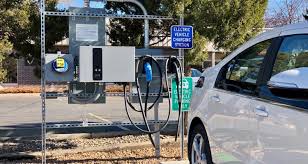The fleet of sustainable mobility is spearheading a green revolution. Once a niche and novelty, electric vehicles (EVs) have evolved to become an integral and burgeoning part of the transportation landscape. This shift towards renewable energy is not only reflected in the innovative models released by auto industry heavyweights but also mirrored in the green initiatives backed by governmental bodies.
With the steadfast surge in the uptake of EVs, the demand for a robust, public charging infrastructure has never been greater. For prospective EV adopters or recent patrons, understanding the ins and outs of public charging practices serves as the keystone of an enriched EV experience. Here’s your roadmap to maneuvering public EV charging stations skillfully.
Locating Public Charging Stations: Leave No Stone Unturned
The cornerstone to mastering public EV charging resides in knowing where you can locate charging docks when needed. A plethora of tools are available at your disposal to effortlessly navigate this search. Apps like PlugShare and ChargePoint are the torchbearers in this domain. They provide an exhaustive map of charging stations, enriched with user testimonials, real-time availability status, and pricing particulars. These resources prove indispensable for short commutes and long hauls alike.
Websites dedicated to EV infrastructure offer another reservoir of information. Platforms such as OpenChargeMap alongside local charging network websites maintain a timely directory of charging stations. Furthermore, many new-age EVs are equipped with inbuilt navigation systems that integrate charging locations. This nifty feature not only pinpoints docking options in proximity but can also propose the most energy-efficient route.
Adopting these digital aids can eliminate uncertainty and transform your charging experience.
Master the Art of Charging: Efficiency is Key
Untangling the nuances of public EV charging can fuel savings in time and money. Charging stations are not homogeneous and understanding the different charging velocities – Level 1, Level 2, and DC fast chargers – is crucial. Level 1 chargers, ideal for residential charging, operate at a conservative pace. Most public docks are Level 2 chargers, offering a moderate fill-up speed – such as chargers seen on this website. For road-trippers, DC fast chargers offer rapid charging, replenishing up to 80% of your battery capacity in under 30 minutes in several instances.
Strategically planning your journey to encapsulate charging breaks is another secret harbored by experienced EV drivers. Incorporating apps like A Better Routeplanner that sync with your car’s battery status can enhance route planning by considering charging requirements.
Also, prudently timing your charging halts can have a significant impact. Charging stations can get crowded during peak hours, especially in high-density areas. Target non-peak periods to dodge queues. Another pointer is to limit public charging to 80% unless critically required – the final 20% charging can be time-consuming and often isn’t worth the wait.
The Future of EV Charging: Simplified and Streamlined
Grasping the mechanics of public EV charging might seem formidable initially, but armed with the right information and tools, it’s a cakewalk. Harnessing modern tech, deciphering charging speed categories, and premeditated planning are the hallmarks of an accomplished EV owner. Whether you’re a seasoned veteran or a novice stepping into the realm of sustainable transport, these tips will maximize the efficiency of your charging excursions. So, enthuse your driving adventure and delve into the seamless world of public EV charging today.
Keep an eye for more news & updates on VentsBuzz!
